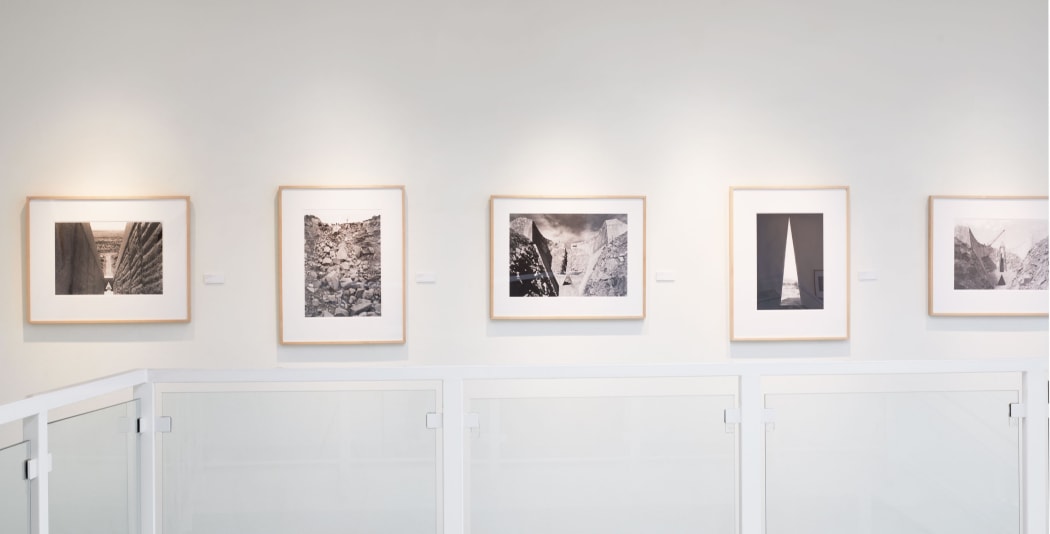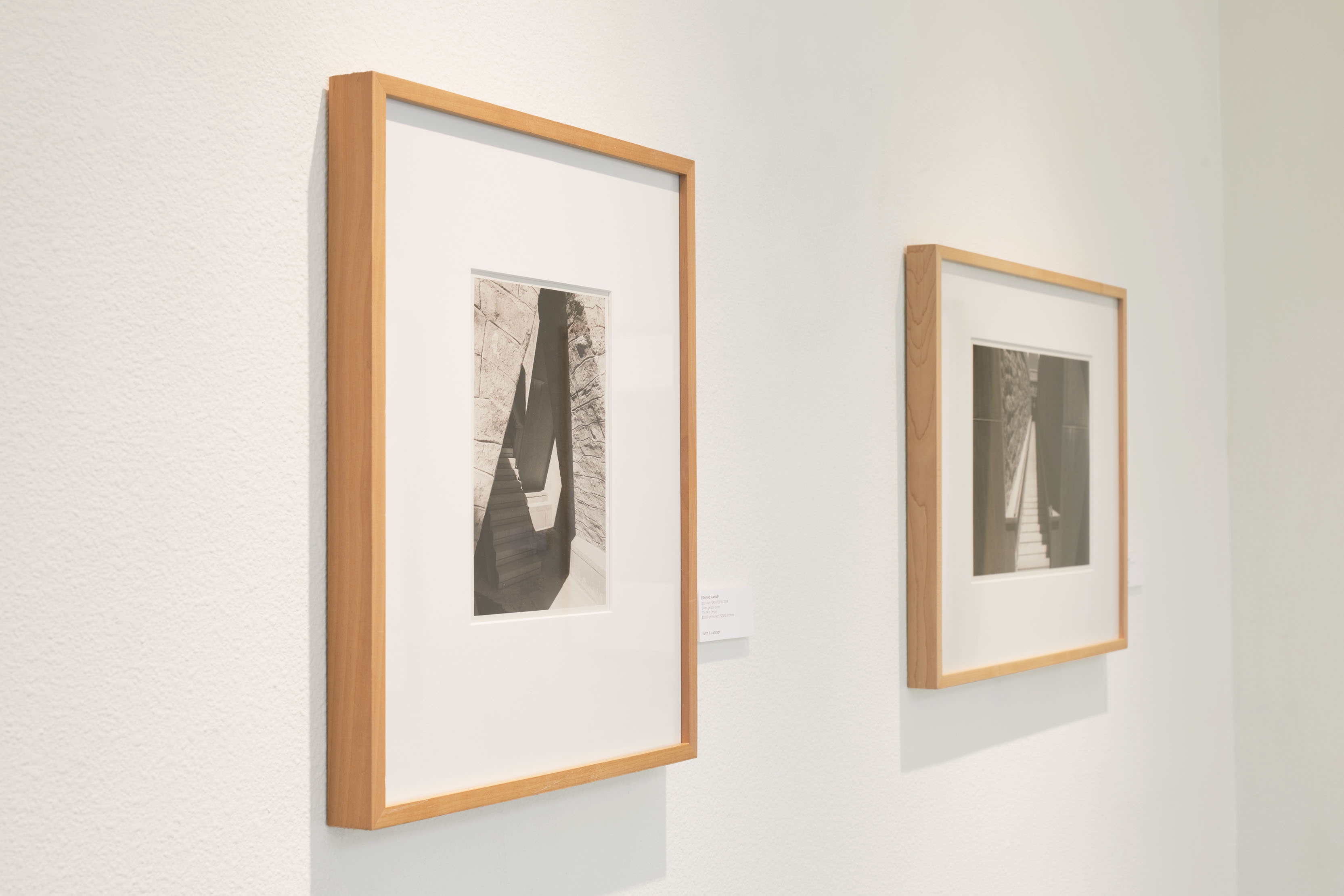
Edward Ranney has photographed the creation of Charles Ross’s Star Axis each year since 1979. His imagery offers gritty views of the monumental effort, highlighting the startling intimacy of the towering artwork’s narrow passages and stairwells. Read his statement below, and experience his work in form & concept's group exhibition Bigger Than This Room.
Artist Statement
I began to photograph Star Axis on Charles Ross’s invitation, in December of 1979, and have continued to photograph the site with black and white film and a 5 x 7” view camera almost every year since then. In contrast to the work I have done over fifty years at archaeological sites in ancient America, my photographs of the evolution of Ross’s earth sculpture represent a kind of archaeology in reverse. The pictures reveal a site gradually emerging from its own rubble, and for me this work is as much about process and duration as about Ross’s interest in relating cosmic phenomena to our human scale. Ultimately these observations of change and structure are, for me, actually about time itself, or as the art historian George Kubler has written in regard to the history of things, the shape of time.
- Edward Ranney, April 25. 2022

ABOUT STAR AXIS
Star Axis is an architectonic earth/star sculpture constructed with the geometry of the stars. Created by artist Charles Ross, all of Star Axis’s shapes and angles are determined by earth-to-star alignments. They are built into the sculpture so that we can experience them in human scale. Star Axis offers an intimate experience of how the earth’s environment extends into the space of the stars.
The approach to building Star Axis involves gathering a variety of star alignments occurring in different time scales and allowing them to form the architecture. The sculpture’s name refers to its primary earth–to-star alignment: it is precisely aligned with Earth’s axis, which now points toward our north star Polaris.
Charles Ross’s artwork is about light, time, and planetary motion. Star Axis is his largest project. It was conceived in 1971, and after a four-year search throughout the southwest, Ross broke ground in 1976. Star Axis is presently being constructed on a mesa in New Mexico. Built with granite and sandstone, at its outside dimensions, Star Axis will be 11 stories high and 1/10th of a mile across.
Star Axis has five main elements. The Star Tunnel is precisely aligned with Earth’s axis. Here the viewer can walk through layers of celestial time, making directly visible the 26,000-year cycle of precession, Earth’s shifting alignment with the stars. The Solar Pyramid marks the daily and seasonal movements of the sun across the Shadow Field. From inside the Hour Chamber you can view one hour of Earth’s rotation, and from inside the Equatorial Chamber you can observe the stars that travel directly above the equator.